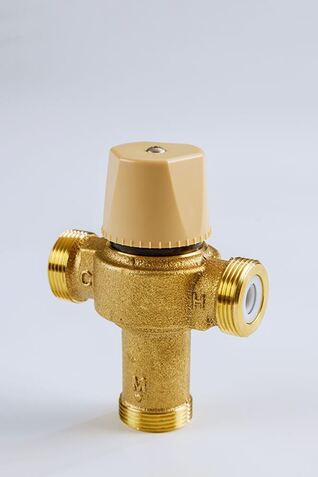
Sometimes your HVAC contractor will tell you that the reason your heat pump or air conditioner is misbehaving is that your thermostatic expansion valve is broken. Therefore, you should know what this is, how it works, how to tell when there is a problem and the possible solutions to those issues. Here is all you need to know about the thermostatic expansion valve.
What Is a Thermostatic Expansion Valve?
A thermostatic expansions valve (usually abbreviated as TEV or TXV) is a device that helps your system function efficiently in controlling the temperature of the room. It regulates the flow of the refrigerant into the evaporator coil. The evaporator coil is part of a heat pump or air conditioning system that absorbs the heat from your home. And it uses refrigerant to do this.
Therefore, if the refrigerant doesn’t flow as required to the evaporator coil, your air conditioning device won’t be able to cool your home. The thermostatic expansion valve is crucial in the sense that it determines if the refrigerant is in the right pressure and position to cool your home as needed.
How Does It Work?
Before you understand how the TXV works, you need to know its components and their functions. The main parts include:
Sensing bulb and capillary line – This is the part that measures the temperature of the refrigerant at the evaporator exit.
Needle – This part varies the opening of the orifice by moving up and down, hence determining the amount of refrigerant that flows to the evaporator coil.
Spring – It restrains the force of the needle.
Diaphragm – This is the part that applies pressure on the needle so that it can determine the amount of flowing refrigerant.
The valve body – This is the body of the expansion valve that holds all the components, including the orifice, which restricts the flow of the refrigerant.
The thermostatic expansion valve uses the refrigerant’s changes in pressure and temperature to regulate its flow to the evaporator coil. To open, there must be an opening force that comes from the sensing valve, thus pushing down the diaphragm. For it to close, there also must be a closing force from the internal spring tension, which pushes the diaphragm up from the bottom.
Since the evaporator functions to cool the refrigerant, the refrigerant that gets into it is usually hot. So, the bulb of the thermostatic expansion valve is filled with an internal charge of refrigerant, which becomes warmer as it senses the refrigerant, building its pressure. Now that the bulb has high pressure, it will push down the diaphragm, opening the orifice, allowing the refrigerant to get into the evaporator coil.
Once the refrigerant has moved to the evaporator coil, the bulb will become cooler, and its pressure will drop. This will make it release the force it is exerting on the top of the diaphragm, and therefore, the diaphragm will move up, closing the orifice. The flow of the refrigerant is then restricted.
The spring tension assists the closing of the valve. As the pressure of the sensing bulb drops, the spring tension, which now has greater pressure, will move the orifice to a more closed position, ensuring that no refrigerant is flowing.
How to Tell if Your TEV Is Malfunctioning
It may be quite challenging to tell that your heat pump or air conditioning unit is malfunctioning because the TXV is broken. Therefore, if you live in Austin metro area, contact Totally Cool Heating & Air to come and inspect your unit for you. Regardless, here are the easy-to-identify signs that your thermostatic expansion valve has a problem.
- If there is inconsistent airflow
- If frost appears on the evaporator
- If your unit is blowing warm air
When you set your thermostat to cooler temperatures and then suddenly, it changes and starts blowing in warm air, then the expansion valve has a problem. Your unit should not alternate back and forth from warm to cold, or the air should not be too cold or too warm.
The presence of frost on the evaporator is a freezing indication. This means that the expansion valve could not stop the refrigerant from going into the evaporator coil, and thus cooling was beyond the required levels.
Warm air from your AC unit or heat pump means that cooling isn’t taking place. That happens because the refrigerant is not making its way to the evaporator coil to cool the air.
If you live in Austin Metro Area, and experiencing any issues with your heat pump or air conditioning unit, call Totally Cool Heating & Air today to get for high-quality inspection and proper fix. Besides solving your heating problems, we also do installations, duct cleaning, replacement and servicing, and any other AC-related services you may need, including products and new equipment.
